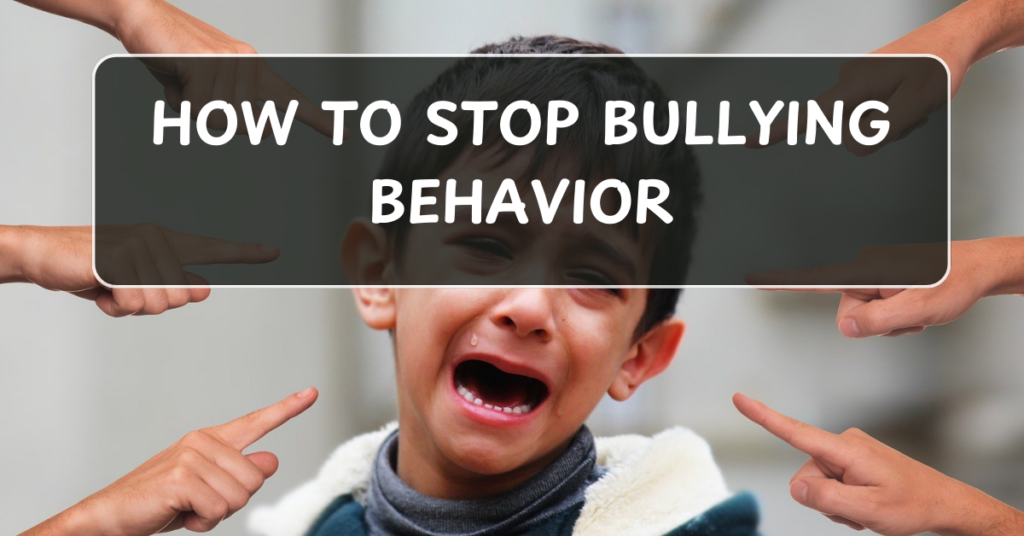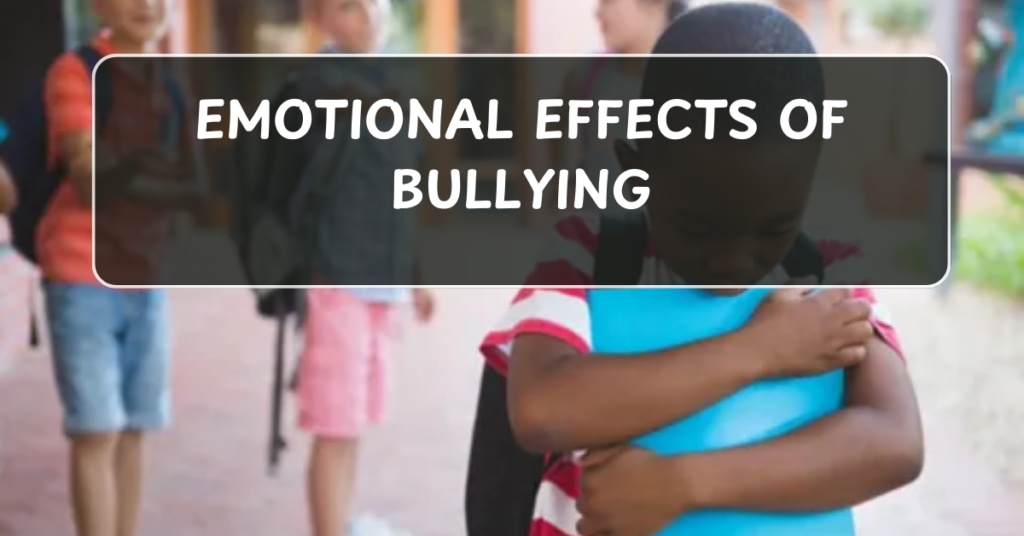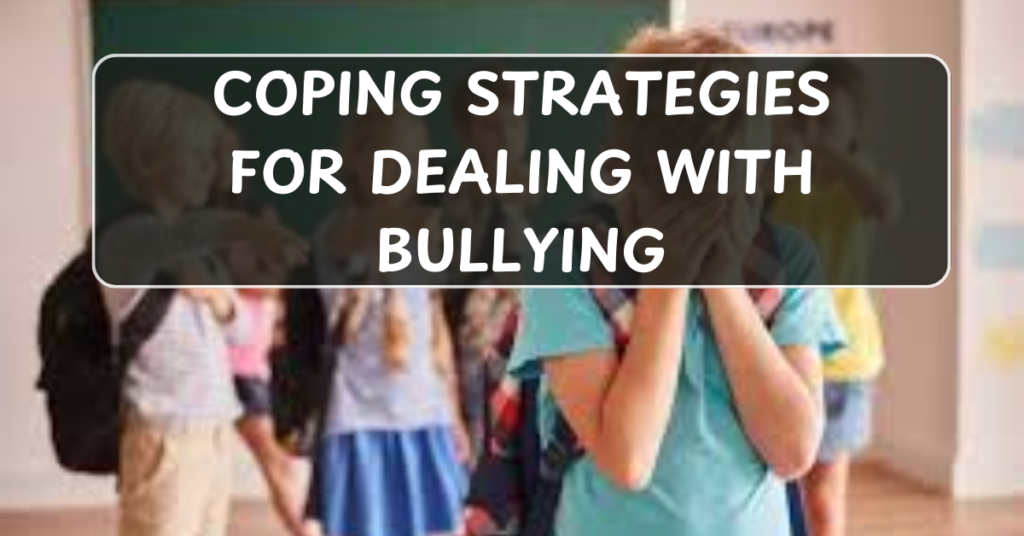
Bullying is a destructive behavior that can have serious emotional, psychological, and physical consequences for both victims and perpetrators. While it is important to address the impact of bullying on victims, it is equally crucial to focus on how to stop bullying behavior before it begins or escalates. In this article, we’ll explore effective strategies to prevent and stop bullying behavior, whether it occurs in schools, workplaces, or other settings.
What is Bullying Behavior?
Bullying behavior involves the intentional mistreatment of others, often through repeated acts of aggression, intimidation, or harassment. It can take many forms, including physical violence, verbal abuse, social exclusion, and online harassment (cyberbullying). Bullying can have lasting effects on both the victim and the perpetrator, making it essential to address and prevent these behaviors from the start.
Why Do People Bully?
Before we discuss how to stop bullying behavior, it’s important to understand why individuals engage in bullying in the first place. Some common reasons include:
- Power and control: Bullies may use aggression to gain power over others or to feel dominant in social or professional situations.
- Insecurity: Often, individuals who bully others have low self-esteem or feel threatened by others’ success or differences.
- Learned behavior: People may learn bullying behaviors from their family, peers, or environment where such actions are normalized or rewarded.
- Lack of empathy: Some bullies may lack understanding or concern for the emotional well-being of others.
- Cultural or societal influences: Certain cultural norms or group dynamics may inadvertently promote bullying behavior, especially in environments where aggression is celebrated or overlooked.
How to Stop Bullying Behavior: Practical Strategies
1. Educate About the Harmful Effects of Bullying
One of the most effective ways to prevent bullying is through education. Helping individuals understand the emotional, psychological, and physical harm that bullying can cause is an essential step in stopping bullying behavior.
- Awareness campaigns: Schools, workplaces, and communities can run anti-bullying campaigns to educate people about the negative effects of bullying.
- Empathy-building programs: Programs that teach empathy, emotional intelligence, and understanding of others’ perspectives can help individuals recognize the harm they’re causing and discourage bullying behavior.
- Role-playing and scenario discussions: Engage individuals in role-playing activities where they can practice dealing with bullying scenarios and learn alternative, non-aggressive ways of interacting.
2. Promote Positive and Respectful Communication
Encouraging open, positive communication helps reduce the likelihood of bullying behavior. Teaching individuals how to express their thoughts, feelings, and needs without aggression or domination is key to stopping bullying.
- Conflict resolution training: Equip individuals with tools to resolve conflicts peacefully and respectfully. This can include active listening, problem-solving, and compromising.
- Assertiveness training: Teach individuals to express their needs and boundaries confidently without being aggressive or passive. Assertive communication fosters respect and reduces the tendency to bully others.
- Encourage positive reinforcement: Praise individuals for positive behaviors, such as offering compliments, supporting others, and helping peers, to reinforce respectful behavior.
3. Create a Safe and Supportive Environment
A safe and supportive environment is essential for preventing bullying behavior. Whether in schools, workplaces, or social groups, fostering a culture of inclusion, respect, and mutual support can discourage bullying.
- Establish clear rules and consequences: Set clear anti-bullying policies and communicate the consequences of bullying behavior. Make it known that bullying will not be tolerated and will have serious repercussions.
- Encourage inclusivity: Celebrate diversity and encourage the acceptance of differences. When people feel valued and respected, they are less likely to bully others.
- Offer support systems: Make it easy for individuals to report bullying without fear of retaliation. Provide resources, such as counselors or support groups, for both victims and perpetrators to seek help.
4. Foster Strong Relationships and Mentorship
Building strong relationships between individuals can reduce the likelihood of bullying behavior. When people feel connected and supported, they are less likely to engage in harmful actions toward others.
- Mentorship programs: Pair individuals who may be prone to bullying with mentors who can model positive behaviors and guide them in healthy social interactions.
- Team-building activities: Encourage teamwork and collaboration through group activities that foster trust, cooperation, and mutual respect.
- Peer support systems: Train bystanders and peers to intervene when they witness bullying. Encouraging a “speak up” mentality can prevent bullying from going unnoticed.
5. Address Underlying Issues with Therapy or Counseling
In some cases, bullying behavior may stem from deeper emotional or psychological issues. Addressing these root causes can be crucial in stopping bullying behavior.
- Therapy for bullies: Individuals who engage in bullying behavior often have unresolved emotional struggles or past trauma. Therapy can help them address these issues, understand why they bully others, and work on healthier ways of coping.
- Anger management: Bullies may struggle with controlling their emotions, particularly anger. Anger management programs or counseling can help individuals find constructive ways to deal with frustration.
- Family counseling: For children or adolescents who bully, family counseling can help address any home environment issues that may contribute to the behavior.
6. Provide Resources for Victims of Bullying
Supporting victims of bullying is just as important as addressing the behavior of the bullies. Providing resources and support for victims can reduce the emotional damage and prevent them from becoming targets again.
- Counseling and mental health support: Offer therapy or counseling for victims of bullying to help them process their feelings and build resilience.
- Empowerment programs: Provide victims with tools to regain their confidence and stand up for themselves in a healthy, non-aggressive manner.
- Support groups: Offer group sessions where victims can connect with others who have experienced similar challenges and offer mutual support.
Conclusion: Stopping Bullying Starts with Us
Stopping bullying behavior requires a multi-faceted approach involving education, communication, and a supportive environment. By addressing the root causes of bullying, promoting respectful behavior, and offering support for both victims and perpetrators, we can create safer spaces for everyone. If you or someone you know is struggling with bullying, whether as a victim or as a perpetrator, it’s important to seek help and take proactive steps to address the situation. Together, we can make a difference in stopping bullying and fostering a culture of respect and kindness.


